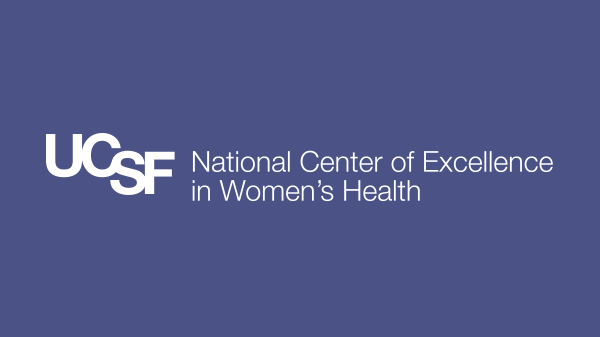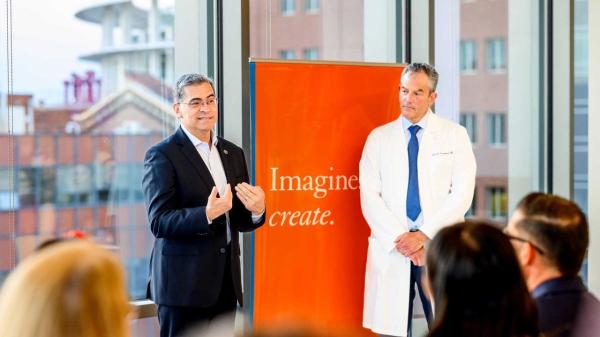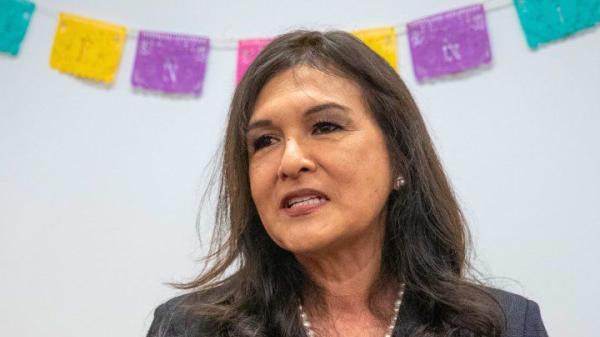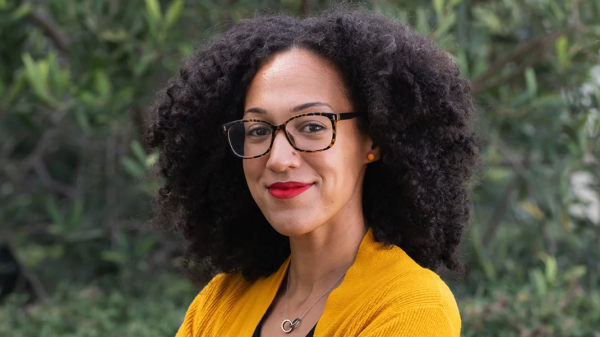A UC San Francisco task force has been formed to recommend a publicly accessible, permanent site for New Deal-era murals that will be carefully removed from a seismically vulnerable building on its Parnassus Heights campus.
The murals, entitled “The History of Medicine in California,” are a series of 10 panels painted in fresco style by Polish-born artist Bernard Zakheim in the late 1930s. After issuing a request for proposals from historic preservation experts, the University selected ARG Conservation Services for the delicate task of removing the aging murals, which were painted directly onto the walls of Toland Hall auditorium, within the 104-year-old UC Hall building. The murals will be removed because the building does not meet today’s seismic safety codes and is scheduled for demolition, to be replaced by a state-of-the-art research and academic building as one of the first projects to revitalize its century-old Parnassus Heights campus.
“The History of Medicine in California” murals are mostly curved WPA-era frescoes housed in an aged building that no longer meets state seismic codes and needs to be replaced.
The task force, which was appointed by UCSF Chancellor Sam Hawgood, will consider locations both on and off the UCSF campus that can accommodate public viewing of the murals.
In selecting task force members, UCSF took the added step of inviting a party beyond the University. An invitation was extended to, and accepted by, the San Francisco Historic Preservation Commission, as outlined in the Environmental Impact Report for the Parnassus Heights project issued in January 2021. (See section 4.4-20 entitled: CPHP Mitigation Measure CUL – 1e: Display of Zakheim Murals)
Members of the multidisciplinary committee appointed to the Future Placement of the Toland Hall Murals Task Force are:
- Brian Dolan (co-chair), professor, UCSF Department of Humanities and Social Sciences
- Alicia Murasaki (co-chair), UCSF campus architect and member, UCSF Art Committee
- Won Ha, vice chancellor, UCSF Office of Communications
- Polina Ilieva, archivist, University Library
- Jhia Jackson, student, UCSF Department of Social & Behavioral Sciences
- Sharmila Majumdar, chair, UCSF Academic Senate
- Diane Matsuda, president, San Francisco Historic Preservation Commission
- Michelle Mourad, associate professor, UCSF Department of Medicine and member, UCSF Art Committee
- Renee Navarro, vice chancellor, chief diversity officer, UCSF Office of Diversity and Outreach
- Mario Peraza, executive director, UCSF Alumni Relations, and co-chair, UCSF Chicanx Latinx Campus Association
- Francesca Vega, vice chancellor, UCSF Community & Government Relations
The task force will solicit input from key stakeholders who have been involved in ongoing discussions about the murals, including members of the Zakheim family and descendants of Biddy Mason. Depicted in the murals as a medical authority, Mason was a formerly enslaved woman who became a pioneering midwife, entrepreneur and philanthropist in Los Angeles.
Other groups that will be consulted in the mural relocation plans include:
- U.S. General Services Administration
- The Living New Deal
- San Francisco Heritage
- San Francisco Arts Commission
- San Francisco Planning Commission
- Jewish Community Federation
- Family of Bernard Zakheim
- Descendants of Biddy Mason
- UCSF alumni
Challenges of Removing the Aging Murals
The large, mostly curved, murals are fragile and, in some cases, have suffered prior water damage, which complicate the removal of the aging murals. UCSF selected ARG Conservation Services, a firm specializing in historic preservation, to perform the delicate work of safely removing them. The prestigious team comprises experts in the preservation of historic artworks, conservation architecture, and safe transport of historic and fine art.
The process for removal began with a thorough assessment of the murals’ conditions. All panels were assessed for structural weaknesses including efflorescence, cracks and plaster loss to determine where stabilization treatments would be necessary and which solvents would be appropriate to use in treating the mural finishes.
Before implementing treatment on the murals, plans were confirmed via infrared analysis, mock-up treatments and a peer review by an AIC-accredited paintings conservator. The mural treatments are underway, and construction work to clear the path for the removal of the panels will begin in July 2021.
In advance of moving the murals, the University has partnered with CyArk, a nonprofit company dedicated to preserving and sharing the world’s most important cultural heritage, to create high-resolution 3-dimensional images of the murals in their original setting in Toland Hall.
Once removed from Toland Hall, the murals will be padded, crated and transported to a climate-controlled storage facility dedicated to housing fine art. The storage facility is monitored around the clock and protected with a fire alarm and security system.




